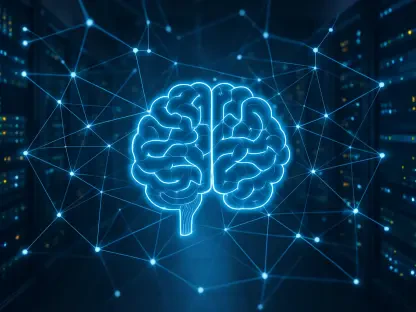Generative Artificial Intelligence (GenAI) is poised to significantly transform the telecommunications industry, particularly in enhancing autonomous network operations. Unlike traditional AI models, GenAI can create new knowledge autonomously, enabling a shift from manual intervention to self-sustaining, adaptable systems. This transformative potential holds immense promise for Communication Service Providers (CSPs), neutral hosts, and enterprises, revolutionizing the way networks are managed and services are delivered.The telecommunications sector is on the cusp of a digital revolution thanks to the advancements brought by GenAI. Unlike its predecessors, GenAI possesses the extraordinary capability to autonomously generate new content and make informed decisions based on unstructured data. This is not merely a technological upgrade; it represents a comprehensive transformation that extends the boundaries of what artificial intelligence can achieve within the industry. With financial estimates suggesting that GenAI could boost productivity by $140 to $180 billion, according to McKinsey, its economic impact is undeniable and far-reaching.
The Capabilities of GenAI
GenAI significantly extends the possibilities of artificial intelligence by generating content and making informed decisions based on unstructured data. This advancement goes beyond merely upgrading existing technologies, contributing to a comprehensive transformation within the telecom sector. With an estimated productivity boost valued at $140-180 billion, as noted by McKinsey, the financial implications are substantial.In the context of telecommunications, GenAI can streamline complex tasks, from data analysis to predictive maintenance. By creating new knowledge and insights, GenAI enables more efficient network operations and service delivery, freeing human workers from mundane tasks and allowing them to focus on more strategic activities. The ability to analyze large datasets and extract actionable insights is particularly valuable, driving efficiency across the board. CSPs can expect their networks to operate more fluidly, addressing issues and optimizing performance autonomously.Moreover, integrating GenAI into telecommunications systems goes beyond task simplification. It paves the way for self-sustaining operations wherein systems can continually learn and adapt without human intervention. This aspect is crucial for the future of telecommunications, where the volume and complexity of data are set to grow exponentially. The adaptive algorithms of GenAI can handle this load effectively, providing real-time solutions and predictive analytics to anticipate and mitigate potential problems before they escalate.
Integrating GenAI into Network Operations
The integration of GenAI within network operations is crucial for achieving fully autonomous networks. This doesn’t merely involve deploying a single technology but rather implementing a comprehensive system that oversees the entire lifecycle of network management. This encompasses everything from initial planning to ongoing maintenance, facilitated by closed-loop automation that spans various service domains.This holistic approach enables CSPs to adopt more adaptable and self-sustaining networks. GenAI’s capabilities in dynamic decision-making and new data generation complement traditional AI functions, driving more nuanced automation processes. By embedding GenAI into every layer of network operations, CSPs can ensure a more resilient and adaptive infrastructure, capable of responding to real-time changes and demands seamlessly.The integration process itself is multifaceted, requiring a well-orchestrated plan that balances immediate needs with long-term goals. Initially, CSPs need to identify the key areas where GenAI can deliver the most impact, such as network monitoring, predictive maintenance, and customer service automation. Implementing GenAI in these fields can yield quick wins, demonstrating its value and paving the way for broader adoption. Meanwhile, the integration should focus on creating an interconnected system where different AI technologies can coalesce, optimizing performance and maximizing benefits.
Layers of Autonomous Networks
Future networks must exhibit the ability to “sense, think, and act,” reflecting a high degree of autonomy in their operations. The first layer, the “sense layer,” involves gathering data across various domains and technologies. This rich dataset forms the backbone of informed decision-making processes.The “think layer,” powered by GenAI, analyzes this data and generates new knowledge. This layer is particularly transformative, as it allows networks to process information not just statically but dynamically, adapting to novel circumstances and evolving over time. Finally, the “act layer” implements the decisions made by the “think layer,” ensuring that the network can autonomously execute tasks, maintain optimal operations, and swiftly address any issues that arise.These layers, when integrated effectively, create a cohesive operational ecosystem. The “sense layer” can be likened to the sensory organs of a biological entity, continuously feeding data into the system. The “think layer” acts as the brain, interpreting this data and formulating actionable insights. Finally, the “act layer” functions as the limbs, executing the decisions with precision and agility. By operating in this triad, GenAI-enabled networks can continuously learn, adapt, and evolve, ensuring maximum efficiency and minimal downtime.
Complementary Technologies
While GenAI is critical to the evolution of autonomous network operations, it works in tandem with other enabling technologies like AIOps (Artificial Intelligence for IT Operations) and network digital twins. AIOps focuses on resolving well-defined problems using AI, enhancing the overall efficiency of IT operations. In contrast, GenAI’s ability to create new data and knowledge takes these efforts a step further by enabling a truly self-evolving system.Network digital twins also play a significant role, providing a virtual representation of the physical network. This allows for real-time simulation and analysis, further enhancing the network’s ability to adapt and self-correct. Together, these technologies create a synergistic environment where GenAI acts as the linchpin, driving more sophisticated and autonomous network operations.The blend of GenAI with AIOps and digital twins creates a robust framework for achieving network autonomy. AIOps can handle routine tasks and predefined scenarios, ensuring that the day-to-day operations run smoothly. Meanwhile, digital twins offer a testing ground for potential changes and optimizations without impacting the actual network. GenAI then ties these technologies together, adding a layer of dynamic decision-making and continuous learning, thus pushing the envelope of what’s possible in autonomous network operations.
Real-World Applications
Practical applications of GenAI in the telecom industry are already emerging, showcasing its transformative potential. Products like Co-pilot systems exemplify this trend by enhancing human-technology interaction. These systems simplify data analysis, auto-generate content, and assist in decision-making processes. For instance, in incident analysis, GenAI can autonomously identify and diagnose issues, recommending solutions with minimal human intervention.In service design, GenAI can generate and optimize service configurations automatically, significantly reducing time-to-market and improving service quality. Process orders can also be handled more efficiently, with GenAI overseeing the entire process from initiation to completion, ensuring accuracy and expedience. These real-world applications underline the practical benefits of integrating GenAI into network operations, driving both efficiency and innovation.The implementation of GenAI in day-to-day operations demonstrates its capabilities beyond theoretical constructs. CSPs have reported improved incident response times, higher service quality, and increased operational efficiency. These tangible benefits underscore the immense potential of GenAI, making it an invaluable asset in the competitive landscape of telecommunications. Furthermore, the adaptability of GenAI systems ensures that they can scale with the growth of the network, providing consistent value as operations expand and evolve.
Path to Full Autonomy
Generative Artificial Intelligence (GenAI) is set to significantly change the telecommunications industry, particularly by improving autonomous network operations. Unlike traditional AI models, GenAI can autonomously create new knowledge, shifting from manual intervention to self-sustaining and adaptable systems. This groundbreaking potential holds immense promise for Communication Service Providers (CSPs), neutral hosts, and enterprises, fundamentally transforming how networks are managed and services are delivered.The telecommunications sector stands on the brink of a digital revolution, thanks to the advancements brought by GenAI. Unlike its predecessors, GenAI can autonomously generate new content and make informed decisions based on unstructured data. This is more than just a technological upgrade; it represents a comprehensive transformation of the industry’s capabilities. Financial estimates from McKinsey suggest that GenAI could boost productivity by $140 to $180 billion, underscoring its substantial and far-reaching economic impact. The advent of GenAI could redefine the future of telecommunications.









